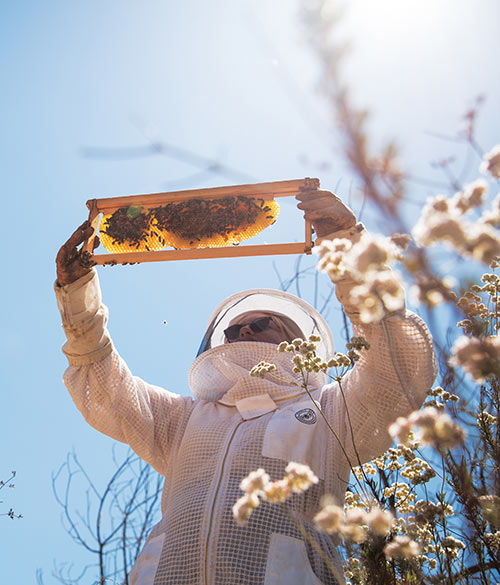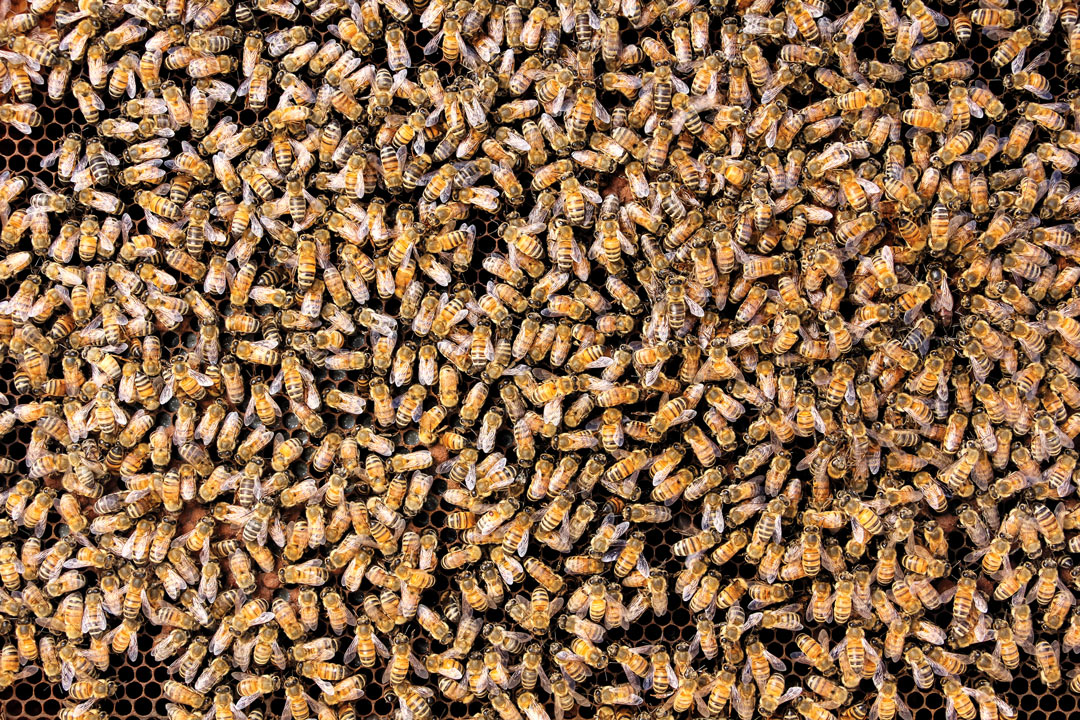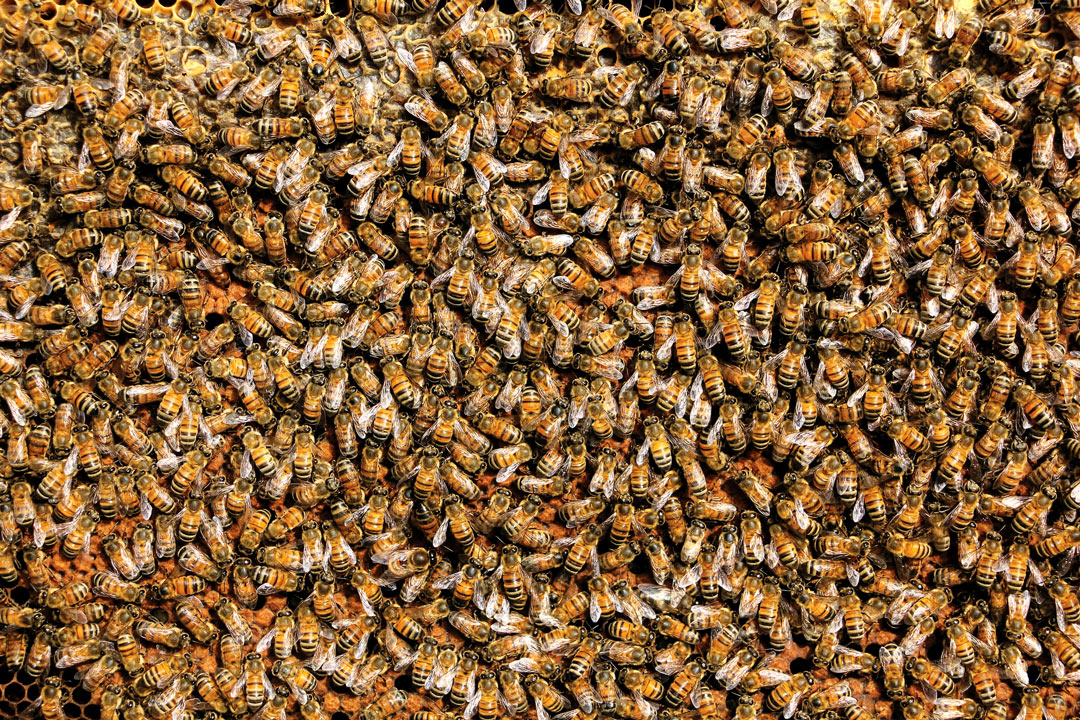
Photo Credit: Tosca Radigonda, Copyright 2019. Used with permission of Storey Publishing
Hilary Kearney, author of Queen Spotting
QueenSpotting
Some bee books are how-to titles, some bee books are thought-provoking and some bee books are aimed at testing your bee knowledge. Hilary Kearney’s new book, QueenSpotting, is not only all of the above, but is also simply a lot of fun. Fun to read and fun to try the QueenSpotting puzzles.
The book’s great success is that amidst all this fun, there is a clear description of life inside a honey bee colony. Using the queen as the focus, the book tells the story of the intimate lives of honey bees, ranging from the drama of swarms and virgin queen battles, to the prosaic details of who keeps the babies clean, well-fed, and warm.
Kearney, the writer of the Beekeeping Like A Girl blog, also runs a successful bee business in San Diego. Her focus is not so much on honey or bee production, but on teaching beekeeping classes, managing hives for clients, catching swarms and doing bee removals. These activities have clearly honed her skill in translating the practical and scientific knowledge of beekeeping into clear, non-jargony, language. Both beekeepers and non-beekeepers will find this book interesting and informative.
Woven around the story of a queen’s life in her colony (and thus the life of the colony as a whole) are a series of humorous, and sometimes poignant, vignettes describing a few of the queens the author has encountered. Her clear appreciation and awe for queen bees shines clearly through. Her tale of the bee removal from a Jet-Ski delights me every time I recall it.
Every reader will find the queen-spotting puzzles intriguing. Locating the queen in your hive is a recurrent challenge for beekeepers of all skill levels. New (and many not-so-new) beekeepers are frequently flummoxed when it comes to finding their queens. Most of us routinely make do with evidence of her presence in the form of eggs and larvae. Long experience improves your skill at spotting her, but there are still no guarantees.
The text and the puzzles (which range from easy to advanced-level) are roughly matched. Descriptions of ways to spot queens are paired with visual examples. So, for beekeepers, reading the text and doing the puzzles will be a skill-building exercise. For some of the harder puzzles, I found it helpful to take the book outside and hold it up like a frame. Granted, what you are missing are the behavioral clues that come from the bees’ movement. But still, it’s a thrill to solve another one of the puzzles! (There is an answer key in the back of the book, if you are truly stumped. And be warned - some queens in the hardest puzzles are only revealing part of their bodies.)
The book, though easy-to-read, is not just a beginners’ book. More experienced beekeepers will also find the fresh descriptions and clear writing useful. For example, I learned a new tip for spotting queens: that their extra-long legs are often light-colored or yellow.
It is rare that a single book can appeal to such a variety of readers: curious non-beekeepers who will appreciate the good science writing and enjoy the puzzles; beginning beekeepers who want to increase their knowledge and queen-spotting skills; and experienced beekeepers will find their sense of wonder about bees rekindled and be able to congratulate themselves on having developed really good “queen eyes.”
Finally, a word about the illustrations: the author took most of the pictures in the book, and all 48 of the double-sized, fold-out pages of the queen-finding puzzles. This book is particularly rich visually and very creatively designed – right down to the hole in the front cover intended to mimic the opening of a feral hive. If you enjoy this book even half as much as I did, you will still be very pleased. NTW
To whet your appetite, here are two of the QueenSpotting puzzles, reproduced with permission.
QueenSpotting puzzle #1 (an intermediate level challenge)
QueenSpotting puzzle #2 (an advanced level challenge) Good luck!
Answer Key for the puzzles: Cover photo: Look for the queen in the center of the picture. QueenSpotting Puzzle #1: Look for her on the upper right. QueenSpotting Puzzle #2: She’s hiding on the upper left, partially concealed.



